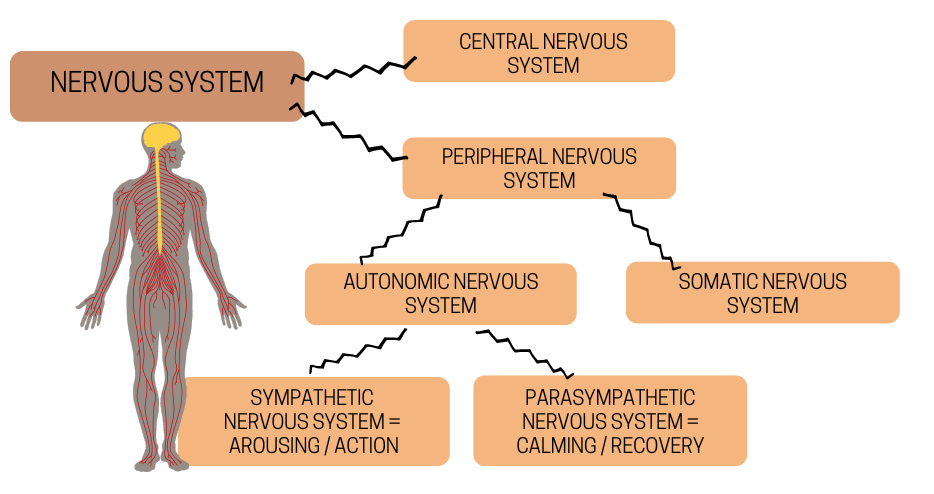
Anxiety, panic disorder, and agoraphobia are three closely related conditions that can cause significant distress and interfere with daily life. If we want to understand the differences, we first need to look at what anxiety is and how it works in our brain and body.
From an anatomical standpoint, the brain and spinal cord together make up the central nervous system. The peripheral nervous system consists of all the nerves and is subdivided into the somatic nervous system and the autonomic nervous system.
The autonomic nervous system is the part of your nervous system that regulates many unconscious functions, like breathing, digestion, and widening and tightening the blood vessels. It works closely with the endocrine system, which is made up of glands that make hormones.
The autonomic nervous system is further subdivided into the sympathetic and parasympathetic nervous system, which have opposite effects.

Simplistically, the sympathetic nervous system arouses you, while the parasympathetic nervous system calms you down.
Arousing means your body gets ready to act. The body uses energy to raise the heart rate and blood pressure. Digestion is less important.
Notice that both of these parts of the autonomic nervous system are always ‘on’. It just depends on which one of the two is more dominant at a certain point. During your sleep, the parasympathetic nervous system will be dominant.
When you feel anxious, the sympathetic nervous system is dominant.
Anxiety
Our nervous system reacts to emotions. Anxiety is an intense emotion, and when you feel anxious, your body interprets this emotion as: “We must be in a dangerous situation. Let’s pump some adrenaline into the bloodstream so that we can run away quickly if necessary.”
It is exhausting for our bodies to be in an ongoing continual state of hyperarousal. The longer and more often you feel anxious, the less is needed to get overstimulated. Your body reacts to a stimulus (for example, a place) as if it might be physically dangerous or life-threatening, even though it’s not. It just reacts to the information that you give to your brain: “I am anxious here.” This goes back to our evolution: we wouldn’t have survived an attack from a wild animal if we didn’t have this alarm system within us. Unfortunately, this alarm system doesn’t work for us in today’s society. There are barely any life-threatening situations nowadays; we mostly feel constant stress or anxiety because of deadlines, expectations, overstimulation, sounds, crowds, et cetera, and our bodies were not designed for this kind of long-term stress.
Anxiety is described in psychology as maladaptive fear. There is an inaccurate appraisal of the threat to well-being (source).
Panic Disorder
Often, people have been under too much pressure for a prolonged period without giving themselves sufficient opportunity to recover. At that point, a person might experience their first panic attack. A panic attack feels like an explosion of fear, and intense anxiety, and is extremely distressing. Most people would describe it as a feeling of completely losing control or dying.
Another feature of the brain is that it associates negative thoughts or feelings with certain places. The amygdala in particular is responsible for this; it is a small structure in your brain that is related to emotional learning. If you’ve had a panic attack in a certain place, you’ll be much more susceptible to anxious thoughts and, therefore, a panic attack when you return to that place.
With panic disorder, there are recurrent unexpected panic attacks.

Agoraphobia
Agoraphobia is characterized by a fear of being in situations or places where you can’t easily get up and leave or where you would not be able to get help quickly if something went wrong, for example, on public transport or being somewhere completely alone. It often happens that secondary agoraphobia develops with a panic disorder because of the fear of leaving the safety of home in case a panic attack occurs in a public setting. Someone who experiences panic attacks likely, but not necessarily, also has agoraphobia. This can ultimately result in a person being housebound. They are not able to leave the house out of fear.